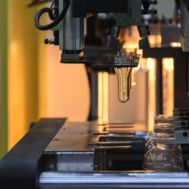
Industries

Applications

Cookie Consent
Cookies are used for statistical purposes and to improve the site.
Cookies will be used after you click "Accept" or if you continue using Dynisco.com
To find out more please review our Privacy Policy.
For over 60 years, Dynisco pressure sensors have been used in various applications around the world.
As the original patent holder for the melt pressure sensor used in extrusion, Dynisco has remained the world class industry leader in this technology by working side by side with our end users to meet the ever-changing demands of the plastics market.
In this technical note, we will explore the relationship between a pressure sensor, and the dedicated indication device or controller, specifically when it appears the pressure reading is not reading correctly and is causing issues with the process.
We should first consider the instrumentation, and the length of time it has been operating. Existing installations rarely exhibit pressure errors, unless the sensor has been damaged, or if someone has inadvertently changed parameter settings.
If this is a new installation, then the recommendation would be to follow the instructions for both the sensor and instrument, to be sure the correct parameters are being met.
The following information should help trouble shoot pressure errors in either situation.
Check parameter settings on the instrument.
The signal input type, and pressure range should match the pressure sensor output type. For example, our model PT462E-10M-6/18 has an output of 0-33.3 mV based on the pressure range of 0 - 10,000 psi (10M) so the indication device should be set to accept the input of 0-33.3 mV=0-10,000 psi, and all additional parameters such as alarms and retransmission outputs will be based on the full pressure range of the sensor.
Dynisco does not recommend setting the input range to a lower value than the sensor is rated for, as this will create an error in the pressure reading. The same is to be said for making the input range of the instrument higher than the rating of the pressure transducer.
Here are two scenarios, which help to explain the mathematics of the sensor output and the way the instrument reads the signal input.
Scenario 1: The input range is set to 5,000 psi on the indication device, but the sensor being used has a range of 7,500 psi, and an output 0-33.3mV. Based on the range of 5,000 psi, the indication device interprets the signal range as 150.15 psi/ 1mV (5000/33.3=150.15) so the instrument will display a lower pressure than what is being seen by the sensor due to the fact there is an output of 225.23 psi/ 1mV (7500/33.3=225.23) The sensor reading 2500 psi in real pressure, would have an output of 11.1mV (225.23 x 11.1= 2500) where the instrument will display 1,667, psi due to the lower input setting of 0-5,000 (150.15 x 11.1 = 1,667)
Scenario 2: The input range is set to 10,000 psi on the indication device, but the sensor being used has a range of 5,000 psi, and an output 0-33.3mV. Based on the range of 10,000 psi, the indication device interprets the signal range as 300.3 psi/ 1mV (10,000/33.3=300.3) so the instrument will display a higher pressure than what is being seen by the sensor due to the fact there is an output of 150.15 psi/ 1mV (5000/33.3=150.15) The sensor reading 3000 psi in real pressure, would have an output of 19.98 mV (150.15 x 19.98 = 3000) where the instrument will display 6,000 psi due to the higher input setting of 0-10,000 (300.3 X 19.98= 6,000)
If there is a safe way to check the signal outputs from the pressure sensor at the instrument terminals, one could make an assumption of the expected signal output against a known pressure (or common pressure of the process) Using a multimeter, the signal output could be observed against the pressure error, to determine if it is a scaling issue with the instrument, or if it is actually a problem with the sensor output.
If the sensor is determined to be the problem, we would recommend checking the tip surface to see if there is any deformation of the diaphragm (sensing end) if there is no visible damage, the next step would be to perform a calibration routine with the instrumentation.
Dynisco recommends that our sensors are calibrated at operating temperature, with zero pressure applied. If the calibration of the sensor does not solve the issue, the next step would be to return the sensor to Dynisco for evaluation. Please contact our customer service department to obtain a return authorization, and instructions for the actual return.
Dynisco manufactures sensors and instrumentation to be used in plastic processing environments, that will last for years provided they are maintained properly.

38 Forge Parkway,
Franklin MA 02038
+1 508 541 9400
Pfaffenstr. 21, 74078,
Heilbronn, Germany
+49 7131 297 0
Lot 3615, Jalan SM 6/8
32040 Seri Manjung, Perak, Malaysia
+605 6884014